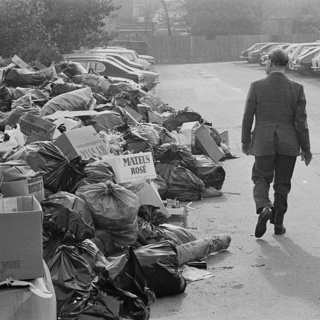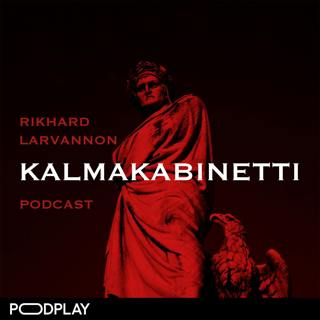
71. The calm and madness before the storm
The mid-1780s were a good time for Pitt. He’d mastered the nation’s finances and cleverly manoeuvred government spending not just into balance, but into surplus, despite spending more on the navy than before. Even the Opposition had to congratulate him. He was facing down the French and he was bringing the possessions in India more firmly under Britain’s control. Even after the king went mad, he called on his remarkable skill as a politician to make sure that, when his extraordinary luck came to his assistance once more, he could take full advantage of it. But then an event took place over which he had no control whatsoever. The suffering people of France rose in revolt against the misery to which their bankrupt nation had condemned them. That epoch-making moment hit Pitt just as he thought he was going to be able to enjoy a well-earned holiday. Illustration: King George III in later life. Studio of Sir William Beechey, circa 1800. National Portrait Gallery 6250 Music: Bach Partita #2c by J Bu licensed under an Attribution-NonCommercial-No Derivatives (aka Music Sharing) 3.0 International License
1 Tammi 202214min

70. Joys and disappointments of limited government
Like so many good things, this one could have some fairly lousy consequences. Just like the United States, if not quite to the same extent, Britain after the War of American Independence was pushing forward the notion of limited government. The king, while still powerful, couldn’t do just what he wanted. So while he’d campaigned hard to get his man, William Pitt the Younger as Prime Minister, it had been made clear that Pitt saw himself as his own man. Similarly Pitt, despite a big majority in the House of Commons, couldn’t get everything his own way either. He had some wins, but he had some big losses too. Which is a good thing, if you’re not keen on any individual having too much power. On the other hand, it was a pity that Pitt’s big losses were on a measure which might have gone a long way to fixing the relationship between England and Ireland, and on starting to reform parliament and doing away with some of its worst abuses, which was long overdue. A pity that British parliamentarians decided that those were the issues on which to limit the power of the British government… Illustration: Cicero in Catilinam by James Sayers, published by Thomas Cornell by 17 March 1785. Pitt is standing and speaking at the dispatch box in the House of Commons. Opposite him, the obese Fox is listening and the nearly-blind Lord North is peering at a document. National Portrait Gallery 12236 Music: Bach Partita #2c by J Bu licensed under an Attribution-NonCommercial-No Derivatives (aka Music Sharing) 3.0 International License
24 Joulu 202114min

69. On towards the second empire
Losing an Empire? Not a problem if you’re the world power Britain was in the late eighteenth century. You just have to build a new one. In part that would come from new journeys of so-called discovery (the people in the ‘discovered’ lands didn’t think they’d been undiscovered before the Europeans showed up). The most famous of the British explorers was Captain James Cook, whose sad end showed that the process didn’t always run smoothly. But the biggest contribution to the new Empire would come from land Britain already held, specifically in India. There, though, its power wasn’t exerted directly, but had been outsourced to the East India Company. Which led to a host of problems. A number of people tried to solve them, including Edmund Burke who attempted to impeach the Company’s first Governor General in India, Warren Hastings. But no one spoke out more forcefully for India than the MP George Dempster, who went so far as to argue for its independence. Sadly, no one was listening. Illustration: Thunder, lightning and smoke published by William Moore and by W. Dickie, hand-coloured etching, 22 April 1783 National Portrait Gallery D15004. Burke and Fox float overhead with impeachment as their weapon. Lord North, beaten in North America, now lost, lies in rags on the left. In the centre is Charles Francis MP, who tried to get parliamentary control over Warren Hastings, on the right, who’s rebuilding the British Empire, but this time in India. And in his own, or the East India Company's, way. Music: Bach Partita #2c by J Bu licensed under an Attribution-NonCommercial-No Derivatives (aka Music Sharing) 3.0 International License
17 Joulu 202114min

68. New Economics
As we emerge from the serious instability in Britain caused by the defection of the American colonies and the war that followed, and as we stand on the brink of Britain’s pursuit of a second empire to replace the first, we pause for a moment to talk about Adam Smith, a man whose ideas have rung down the centuries to today. It turns out they’re not exactly what many of his admirers might suggest. But then, from his time on, most of them have been ignored by the people in power anyway. Illustration: Adam Smith, etching by John Kay in 1790. National Portrait Gallery D16843 Music: Bach Partita #2c by J Bu licensed under an Attribution-NonCommercial-No Derivatives (aka Music Sharing) 3.0 International License
10 Joulu 202114min

67. A new era
After a period of serious instability, the fifth government in a period of a mere two years secured itself a position in which it would last for the best part of two decades. The process was a particularly curious one, since it involved what has been referred to as a coup d’état by the king against his own government. That succeeded only thanks for the clever work of the monarch, and above all of the man who would become Britain’s youngest Prime Minister ever. Illustration: ‘Aside he turn’d for envy, yet with jealous leer malign, eyd them askance’, by James Gillray. National Portrait Gallery D12302. Fox on the right glaring at Pitt, second from left. Music: Bach Partita #2c by J Bu licensed under an Attribution-NonCommercial-No Derivatives (aka Music Sharing) 3.0 International License
3 Joulu 202114min

66. Crisis in Britain
While there’s much talk about the huge gains made by the American colonists, and the triumphant launching of the United States of America, far less is generally said about the effect of the American war in the mother country itself. Since Britain was also fighting France, Spain and Holland, the impact on its economy was massive, and on the political establishment if anything even more massive. Loyalty swung wildly, old allies became new adversaries, or vice versa, administrations were formed and fell in rapid succession. All this happened while in the background the latest battle was being fought between king and parliament over who would have the greatest authority over government. Illustration: Soldiers deployed during the Gordon Riots, by John Seymour Lucas, in a painting of 1879. Public Domain Music: Bach Partita #2c by J Bu licensed under an Attribution-NonCommercial-No Derivatives (aka Music Sharing) 3.0 International License
29 Marras 202114min

65. Another Revolution
With the fall of Lord North’s government, king George III found himself obliged to submit to the authority of parliament and appoint a government led by the Marquess of Rockingham, a man he deeply disliked and distrusted. His resentment was all the deeper because Rockingham, almost certainly at the urging of his secretary the remarkable Edmund Burke, laid down conditions for the formation of the government, and in particular the staggering words, “The king must not give a veto to the Independence of America.” A subject telling the king what he must not do? That was a small revolution. Rockingham’s was the first of three short-lived governments whose most important achievement was the granting of US independence, the end of the war in America, and the end of the wider, world war to which it had led. Illustration: The Treaty of Paris, by Benjamin West, 1783. The painting is unfinished because the British delegation to the treaty negotiations refused to pose for it. Music: Bach Partita #2c by J Bu licensed under an Attribution-NonCommercial-No Derivatives (aka Music Sharing) 3.0 International License
19 Marras 202114min

64. North's last laugh
We’ve seen how the British war in North America led to yet another world war, and how that war then reacted back on the American fighting by, in effect, making the victory of the rebel colonists ultimately all but certain. In this episode, we think about what the impact of all that was on life in Britain itself. There, it played a huge role in the never-ending battle between royal and parliamentary power. The king, George III, was fighting to hang on to his still considerable prerogative, in particular to appoint ministers, including the leading figure in a government, increasingly though still not officially called the Prime Minister. Against the king and his loyal government, led by Lord North, many in the Whig Opposition wanted to see power move still further towards the parliamentary side. With the war not going particularly well, and indeed going exceptionally badly in North America, North found his position increasingly embattled. And the Opposition moved in for the kill, to bring him down and to claw more authority from the king. Successfully in the end. Though North did have the last laugh. Which must have been fun, though perhaps not enough to make up for the failure of his administration… Illustration: Frederick North, 2nd Earl of Guildford (Lord North in his time as Prime Minister), by Nathaniel Dance, 1773-74. National Portrait Gallery 3627. Music: Bach Partita #2c by J Bu licensed under an Attribution-NonCommercial-No Derivatives (aka Music Sharing) 3.0 International License
13 Marras 202114min






















